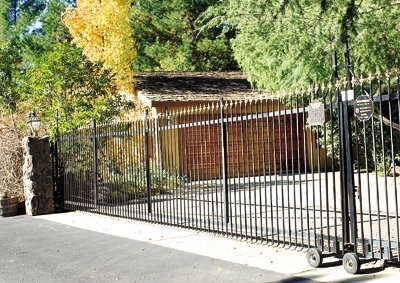GILROY
– The City Council will tackle how it will approach the creation
of key planning documents affecting some of the city’s most
high-profile land-use issues – including downtown development and
revitalization, preservation of agricultural lands and open space
and designing new mixed-use city neighb
orhoods – at its meeting tonight.
GILROY – The City Council will tackle how it will approach the creation of key planning documents affecting some of the city’s most high-profile land-use issues – including downtown development and revitalization, preservation of agricultural lands and open space and designing new mixed-use city neighborhoods – at its meeting tonight.
And under a proposal on tonight’s agenda, councilmembers will have to decide whether it’s worth it to streamline the process – by bringing fewer potential stakeholders to the table through smaller community task forces – in order to speed up the formation and implementation of three important plans by several months.
“It cannot and would not represent everyone who’s usually on a normal task force, but it gets it done quicker,” City Manager Jay Baksa said of the streamlined approach.
The discussion comes as the city moves to implement provisions of its long-debated new General Plan, the overall land-use “Bible” that sets priorities and policies and maps them out in specific areas of the city.
The Council adopted the plan this summer after spending years in development and revisions, including much controversy around a decision to designate 660 acres of farmland east of the Gilroy Premium Outlets for campus industrial-type development.
With the general provisions in the General Plan adopted, city planning staff are now slated in coming months to translate those rules into more specific plans and sets of rules for three important areas: a policy for agricultural preservation and mitigation, a new “specific plan” for downtown, and guidelines for new mixed-use “neighborhood districts.”
In the past, task forces assembled to guide the development of such plans and rules have included up to 25 people from different stakeholder groups and interests, city officials said. With such representation now, city officials have forecast it would take a year to 18 months to complete each of the three new plans.
But the city’s Community Development department is also in the midst of specific plans for the sensitive Hecker Pass area and for the Glen Loma Ranch, which would be the largest development in the city’s history. And city officials have warned Council that developing the new plans under currently adopted timetables – while also working through key, specific projects such as major east-side shopping centers – would be nearly impossible and probably lead to some delays in processing development applications.
“These are all very intense politically, as well as through staff work,” Baksa said of the three new plans.
Under a streamlined proposal suggested by city staff to be considered tonight, the city would instead assemble smaller 10-member “power task forces” – including two councilmembers and two planning commissioners on each – to guide development of the plans.
Officials estimate the approach could advance completion of work on each plan by up to an estimated six to eight months. But besides loss of some direct representation, Councilmembers would also face the prospect of grueling schedules featuring the addition of several meetings or subcommittee meetings in addition to their current duties.
“There are pros and cons, but it gets all five plans through that much quicker,” Baksa said.
The agricultural mitigation policy could affect several development projects – including the 660 acres. Under guidelines adopted this summer, developers would be required to replace prime agricultural land in development on an acre-for-acre basis, either through land swaps, purchases or payments to agencies.
The task force would hammer out the nuts and bolts of that plan, such as how transactions would work or which agencies would be involved and how.
The second task force would guide formation of the Downtown Specific Plan, a document that will lay out specific policies and provisions affecting everything from parking to incentives for developers to how much residential development should occur in the area.
Councilmembers have tentatively decided to wait before developing incentive programs for new construction in the downtown until the plan is complete.
Meanwhile, a third task force would address a new mixed-use residential zoning concept called a “neighborhood district” for some new housing development that’s noted in the General Plan.
Areas under this type of zoning are meant to incorporate a variety of housing elements – from high-end homes to higher-density rental housing – as well as some commercial development so neighbors don’t have to drive as far for some services.
“It’s a mixed-use … and a neighborhood concept,” Baksa said. “It was put in there as a general comment, and now we need a firm definition of what all that means and how it would work.”
Task Forces Information:
City staff have suggested using streamlined “power task forces” to help guide major planning efforts for the downtown, agricultural mitigation and new mixed-use city neighborhoods. Here’s the membership they’ve suggested for each task force:
Agricultural Mitigation
• 2 City Council members
• 2 Planning Commissioners
• 3 individuals with “agricultural interests,” such as a property owner, a farmer and an “agricultural stakeholder”
• 1 citizen at large
• 2 “special interest” representatives, such as open space and the Chamber of Commerce
Downtown Specific Plan
• 2 City Council members
• 2 Planning Commissioners
• 2 downtown property owners
• 2 downtown business owners
• 1 citizen at large
• 1 Chamber of Commerce member
Neighborhood Districts
• 2 City Council members
• 2 Planning Commissioners
• 2 representatives from the “development community”
• 2 developers who received units in the most recent round of allocations under the city’s growth-control law, the Residential Development Ordinance
• 1 citizen at large
• 1 affordable housing advocate
The meeting begins at 7 p.m. in the City Council Chambers at Gilroy City Hall, 7351 Rosanna St.














